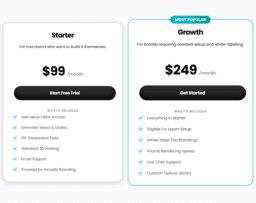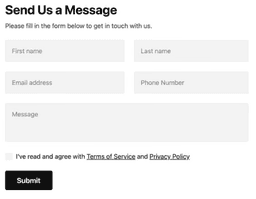Where to Begin? Pygame vs Kivy
For those getting started in game development, Pygame, with its simpler design and extensive cross-platform capabilities, is the more beginner-friendly choice. For creatives seeking a robust multi-touch framework for innovative applications, Kivy, with its MVC architecture and fast graphics rendering capability, is the preferable option.

Key Differences Between Pygame and Kivy
- While Pygame specializes in creating video games, Kivy is widely used for developing multi-touch applications.
- Pygame provides an easier learning curve, making it ideal for beginners and educational purposes. Kivy, however, has a steeper learning curve due to its advanced capabilities.
- Kivy’s MVC architecture and OpenGL enable fast graphics rendering, making it suitable for creating visually appealing applications. Pygame focuses on simplifying real-time game development
- Both offer cross-platform capabilities, but, Pygame stands out for its high portability, running on nearly every operating system, while Kivy supports Windows, macOS, Linux, iOS, and Android.
| Comparison | Pygame | Kivy |
|---|---|---|
| Language | Python, C, Cython, Assembly | Python |
| License | GNU Lesser General Public License | MIT License |
| Main Features | 2D sprite scene graph management, MIDI support, pixel-array manipulation | Multi-touch applications, fast graphics rendering, MVC architecture |
| Platform Compatibility | Android, AmigaOS, Dreamcast, Atari, AIX, OSF/Tru64, RISC OS, SymbianOS, OS/2 | Android, iOS, Windows, macOS, Linux |
| Community Support | Yes | Yes |
| Use Case | Video Game Development, Open Source Projects | Multi-touch Apps, Desktop and Mobile Application Development |
| Performance | 10-20 times faster than Python | Better than HTML5 cross-platform alternatives |
| Learning Curve | Easier, targeted for beginners | Possible learning curve, limited third-party libraries |
What Is Pygame and Who’s It For?
Pygame is an open-source set of Python modules revered for creating video games. Being cross-platform capable, it’s opted for vector math, collision detection, and pixel-array manipulations, among others. This tool is highly accessible and easier to use, making it an ideal choice for beginners, college students, and even first-time programmers keen on game development.
With less than 60k token length, Pygame resonates with those seeking a compact, efficient, yet robust gaming platform. Supported on nearly every operating system, it is an ideal choice for handheld devices and game consoles, and it is a true portable tool.
Pros of Pygame
- Support for multiple platforms and devices.
- Easy access for beginners.
- Utilises Simple DirectMedia Layer (SDL) library
- Enables creation of open source, freeware, shareware, and commercial games.
- Active community-driven development approach.
Cons of Pygame
- Requires understanding of Python, C, Cython, Assembly.
- Controls game speed through FPS, which can cause confusion for some developers.
What Is Kivy and Who’s It For?
Kivy is an open-source, Python-based framework used for developing multi-touch applications with a natural user interface. It supports multiple platforms including Windows, macOS, Linux, iOS, and Android. This sophisticated framework rests on the Model-View-Controller (MVC) architecture and uses a declarative language for efficient UI definintion.
With its fast graphics rendering through OpenGL and dynamic, responsive UI, Kivy is the go-to technology for developers building applications for touch-based devices like smartphones and tablets. However, the learning curve, limited third-party libraries, and potential performance issues with complex apps might be challenging.
Pros of Kivy
- Supports multiple platforms and devices.
- Fast graphics rendering through OpenGL.
- Active community of developers for support and tutorials.
- Natural user interface ideal for touch-based devices.
Cons of Kivy
- Requires an understanding of Python 3.
- Limited third-party libraries.
- Potential performance issues with complex applications.
Code Examples for Pygame & Kivy
Pygame
Our sample Pygame code creates an interactive bouncing ball on the screen. Key prerequisites include Pygame installed and the RGB values understood for custom color options.
import pygame
pygame.init()
screen_dimensions = (400, 300)
screen = pygame.display.set_mode(screen_dimensions)
color = (0, 128, 255) #RGB for Sky Blue
ball_radius = 15
velocity =
position =
clock = pygame.time.Clock()
while True:
for event in pygame.event.get():
if event.type == pygame.QUIT:
quit()
position += velocity
position += velocity
if position <= 0 or position >= screen_dimensions - ball_radius:
velocity = -velocity
if position <= 0 or position >= screen_dimensions - ball_radius:
velocity = -velocity
screen.fill((0, 0, 0))
pygame.draw.circle(screen, color, position, ball_radius)
clock.tick(60)
pygame.display.flip()Kivy
The following Kivy code creates a simple Hello World application with a twist. This code requires Kivy installed and Python. You press the button, and the “Hello, Kivy!” text changes color randomly.
import kivy
from kivy.app import App
from kivy.uix.button import Button
from kivy.uix.label import Label
from kivy.uix.boxlayout import BoxLayout
from random import random
class MainApp(App):
def build(self):
self.label = Label(text='Hello, Kivy!', font_size='40sp')
self.button = Button(text='Change color', on_press=self.change_color)
self.box = BoxLayout(orientation='vertical')
self.box.add_widget(self.label)
self.box.add_widget(self.button)
return self.box
def change_color(self, instance):
self.label.color =
if __name__ == '__main__':
MainApp().run()Pygame or Kivy? The Tech Verdict
The heavyweight bout of Python modules: Pygame vs Kivy. Which development tool gets the win? Let’s explore.
Beginner Game Developers
With its community-created tutorials and ease of access, Pygame clearly has the advantage. It’s simpler to use, and the flexibility of speed control and background scrolling make it the perfect practice field for budding game programmers.

Multi-touch Application Creators
If you’re crafting multi-touch applications with a natural user interface, make Kivy your tool. It’s built for touch-based devices, gestures, and dazzling UI elements. Yes, it sports a steeper learning curve, but the end results are worth it.

Android Focused Developers
Pygame shines when your heart is set on Android. Its compatibility with Android devices coupled with sound, vibration, keyboard, and accelerometer support is unparalleled. Build without the stress of multi-platform adaptation.

Total Graphics Control Seekers
Jonesing for full control over 2D and 3D graphics? Seek refuge in Kivy. OpenGL ES 2 compatibility delivers that sought-after authority over your project’s graphical elements.

In an arena where beginners want simplicity and veterans crave versatility, Pygame sweeps with ease of use while Kivy commands with advanced graphical control. Tool selection isn’t universal, it depends on your battles and desired war trophies.







